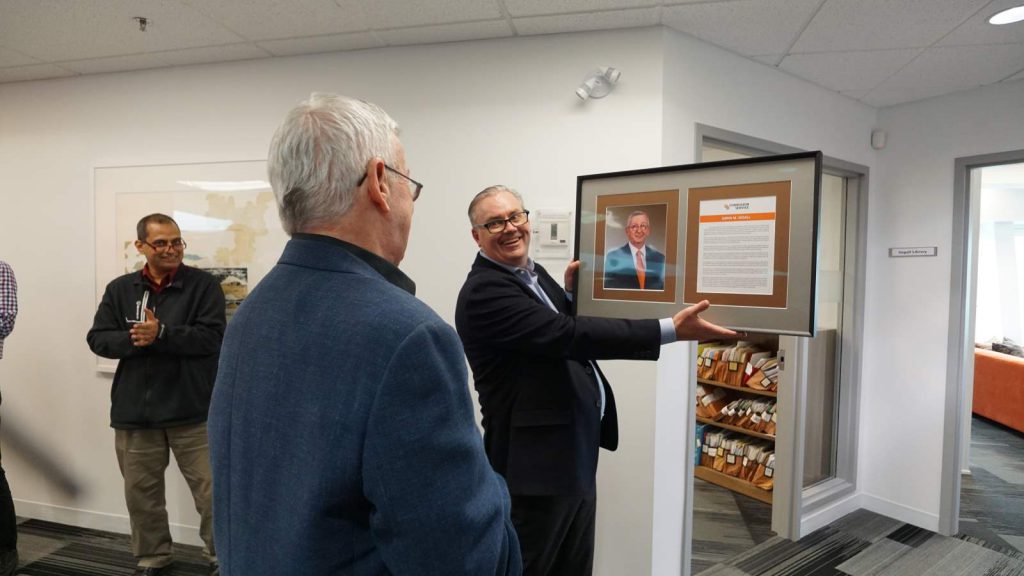Since our founding Corrosion Service has and remains a leader in the corrosion control industry, supporting the various industries in North America and around the World ensuring asset integrity by providing responsible engineering services.
As part of our continued commitment, we would like to welcome you to our electronic Library as the place to view our various technical papers written and presented since 1950 supporting, educating and advancing the corrosion industry advancement.
On your left you can select the author of interest to view all papers presented or enter a search by topic. For each, an abstract is provided and a download link for your review. We would be please to assist if you have any questions and feel free to contact us.

The Corrosion Service Library
We converted a prime corner office into a Library at our Head Office and dedicated the room to Sorin Segall because of his commitment to Corrosion Service, the numerous papers presented, the engineering mentoring within Corrosion Service and to our industry. We would be pleased for you to come and view this comprehensive library that includes various text books, relevant publications, all NACE Materials Performance magazines presented since first publication, technical bulletins and various other related corrosion related print material.
Our Technical Papers For Download
This paper outlines the procedures used in designing a cathodic protection systems for new or existing water piping. Both sacrificial and impressed current systems are discussed, and design examples for various application of these systems are also given. DOWNLOAD PAPER
The corrosion susceptibility of steel storage tank systems is now well recognized by government regulatory agencies since most Provincial governments in Canada have introduced legislation making it mandatory that new tank installations incorporate corrosion control equipment and that existing tanks and piping be upgraded to […]
It has been estimated that 5 to 10% of the approximately 200,000 petroleum product storage tank systems in Canada are leaking and about 40 to 50% of these are a result of corrosion perforations in the tankage.* External corrosion is responsible for about 85% of […]
Most metals exposed to a liquid phase corrosive environment can be protected from aggressive corrosion attack using an electrochemical prevention technique, either cathodic protection (CP), anodic protection (AP) or potential adjustment protection (PAP). Which of these methods of protection is appropriate depends primarily on the […]
The cost of rehabilitating the 38,000 km of water distribution piping in Ontario, currently valued at $21.2 billion ($2,725 per capita) has become a major focus of attention. Not only is it estimated that 15% of the water supplied is unaccounted for but the average […]
A 1985 study prepared by Canada Mortgage and Housing Corporation stated that “the overall cost of repairs to damaged parking structures in Canada has been estimated at 1.5 to 3 billion dollars.” Most of the damage which has necessitated these repairs has been caused by […]
The possibility that cathodic protection (CP) could successfully reduce corrosion on reinforced concrete structures exposed to the atmosphere was postulated by Finley in 1961 and later attempted on bridge decks by Stratfull and Fromm during the 1970’s. Much of the research work into the types […]
Use of Electrochemical protection systems (Cathodic, Papritection® and Anodic) has significantly increased during the last decade. Cathodic protection has been routinely installed on underground structures such as pipelines and storage tanks however, the use of electrochemical protection systems has now gained acceptance to protect the […]
